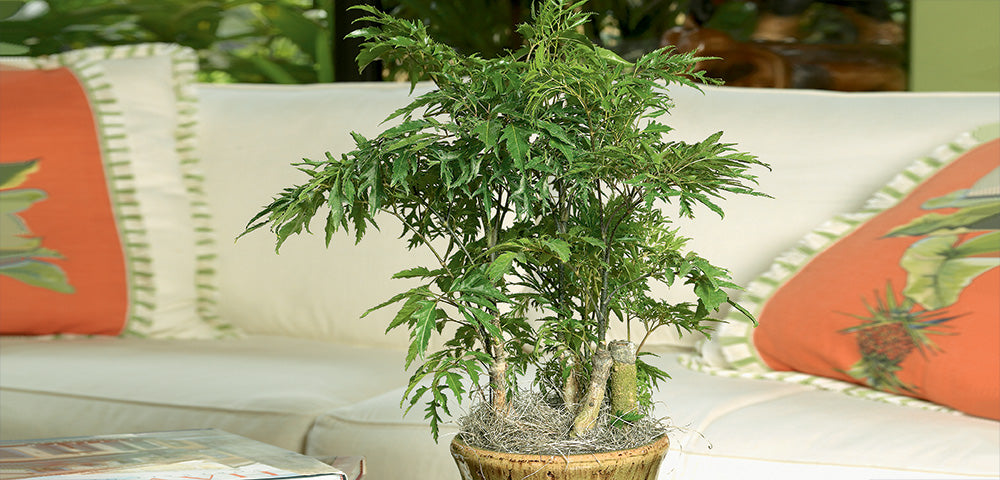Aralia (Polyscias spp.)
Aralia Plant Features
Beautiful aralias are easy-to-grow and have been popular indoor plants for more than a century. Prized for their finely cut, divided leaves, aralia varieties are ideal for adding softness and texture to indoor spaces. Available in a range of sizes, aralias in smaller pots are ideal for desks and tabletops. Specimens in larger plants are excellent indoor trees.Small aralia plants are perfect for grouping with other houseplants; aralias' textures are a beautiful contrast against plants with larger leaves. They also add flair to an otherwise drab desk. Larger aralia plants, because of their upright shape, are popular for filling empty corners and flanking large pieces of furniture for a formal look. Or add an aralia to your entryway to make it instantly more welcoming.
Aralia Questions?
We love talking with other gardeners! If you have questions about growing aralias, drop us an email and one of our experts will get back to you.
Aralia Growing Instructions
Grow aralias in medium to bright light. They tolerate medium light, but will grow faster and lusher in a bright spot. Like other popular houseplants, they appreciate humidity; if you'd like to boost humidity, place your aralia on a tray of sand or pebbles and water; keep it near a small humidifier; or group it with other houseplants as they add moisture to the air as they breathe.Water aralias just enough to keep them from wilting. It's best to let the top inch or so of the potting mix dry before watering it again. That may be from a couple of times a week to once every two weeks, depending on the size of the plant, the size of the pot, and how much light it gets. If you're in doubt, it's better to keep aralias too dry than too wet.
Aralias benefit from being repotted every couple of years; spring and summer are the best times, but you can repot an aralia any time of the year without harming this houseplant. When repotting, look for a container that's only a couple of inches wider than the previous pot, and be sure it has adequate drainage.
Like most houseplants, aralias are not intended for human or animal consumption.
-
Water
Medium water needs
-
Light
Indoors: High light
Indoors: Medium light
-
Colors
Green
Variegated
-
Special Features
Purifies the air
Complement your Aralia
Chinese EvergreenChinese evergreen is a practically foolproof houseplant, and its broad foliage makes a beautiful contrast to aralia.
Money Tree
Money tree is another popular indoor plant that thrives in the same conditions as aralia. The two look beautiful planted next to each other.




